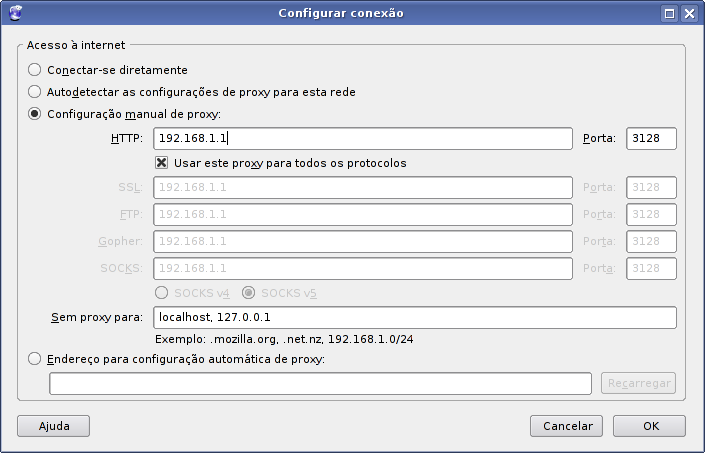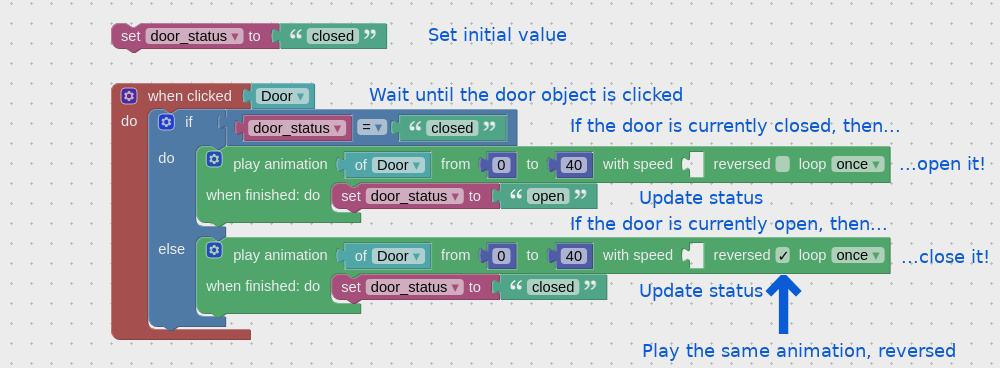
Socks Proxy 5 List
SOCKS free proxy servers list, open Socks5 and Socks4 proxies
Show ANM SSL Port Type Sort Proxy address:portProxy typeAnonymity*Country (city)Hostname/ORGLatency**Speed***UptimeCheck date (GMT+03)123. 18. 206. 50SOCKS5HIAVietNam (Son Duong)123. 50 (VNPT Corp)2. 07338% (103) -05-oct-2021 18:10 (1 hours ago)98. 162. 96. 52SOCKS5HIAUnited States98. 52 (ASN-CXA-ALL-CCI-22773-RDC)2. 00374% (1233) -05-oct-2021 18:09 (1 hours ago)192. 111. 129. 150SOCKS5HIACanada (Toronto)192. 150 (PERFORMIVE)2. 81587% (1599) -05-oct-2021 18:09 (1 hours ago)72. 217. 216. 239SOCKS5HIAUnited States72. 239 (ASN-CXA-ALL-CCI-22773-RDC)0. 95490% (1543) -05-oct-2021 18:09 (1 hours ago)103. 82. 37SOCKS5HIAIndia (Udaipur)103. 37 (Gujarat Telelink Pvt Ltd)8. 62228% (122) -05-oct-2021 18:08 (1 hours ago)181. 6. 95. 102SOCKS5HIAArgentina!!! (Telecom Argentina S. A. )12. 45133% (1) -05-oct-2021 18:08 (1 hours ago) (Hetzner Online GmbH)1. 96499% (3294) -05-oct-2021 18:07 (1 hours ago)198. 8. 94. 170SOCKS5HIACanada198. 170 (PERFORMIVE)0. 83581% (2129) -05-oct-2021 18:07 (1 hours ago)70. 185. 68. 133SOCKS5HIAUnited States70. 133 (ASN-CXA-ALL-CCI-22773-RDC)0. 95565% (614) -05-oct-2021 18:07 (1 hours ago)98. 170. 57. 231SOCKS5HIAUnited States98. 231 (ASN-CXA-ALL-CCI-22773-RDC)0. 92591% (1538) -05-oct-2021 18:07 (1 hours ago)184. 2. 190SOCKS5HIAUnited States184. 190 (ASN-CXA-ALL-CCI-22773-RDC)3. 85369% (835) -05-oct-2021 18:06 (1 hours ago)134. 209. 29. 120SOCKS5HIAUnited Kingdom (London)134. 120 (DIGITALOCEAN-ASN)0. 1284% (1571) -05-oct-2021 18:06 (1 hours ago)192. 138. 29SOCKS5HIAUnited States192. 29 (PERFORMIVE)3. 34988% (2455) -05-oct-2021 18:06 (1 hours ago)88. 198. 50. 103SOCKS5HIAGermany (Munich) (Hetzner Online GmbH)0. 05398% (3177) -05-oct-2021 18:06 (1 hours ago)174. 77. 196SOCKS5HIAUnited States174. 196 (ASN-CXA-ALL-CCI-22773-RDC)1. 09374% (1444) -05-oct-2021 18:05 (1 hours ago)52. 175. 21. 231SOCKS5HIAHong Kong (Central)52. 231 (MICROSOFT-CORP-MSN-AS-BLOCK)1. 45391% (118) -05-oct-2021 18:05 (1 hours ago)109. 72. 231. 37SOCKS5HIARussia (Moscow) (OOO Gruppa MosLine)0. 27536% (382) -05-oct-2021 18:05 (1 hours ago)96. 75. 254. 66SOCKS5HIAUnited States (Kokomo) (COMCAST-7922)6. 23677% (249) -05-oct-2021 18:05 (1 hours ago)212. 115. 110. 225SOCKS5HIAGermany (Frankfurt am Main)212. 225 (Kamatera Inc)0. 10696% (25) -05-oct-2021 18:04 (1 hours ago)174. 211. 222SOCKS5HIAUnited States174. 222 (ASN-CXA-ALL-CCI-22773-RDC)0. 92474% (2121) -05-oct-2021 18:03 (1 hours ago)161. 202. 101. 222SOCKS5HIAJapan (Tokyo)!!! (SOFTLAYER)1. 63447% (88) -05-oct-2021 18:03 (1 hours ago)72. 195. 34. 59SOCKS5HIAUnited States72. 59 (ASN-CXA-ALL-CCI-22773-RDC)0. 93774% (546) -05-oct-2021 18:03 (1 hours ago)195. 67. 202SOCKS5HIATurkey (Istanbul) (Turk Telekom)1. 39626% (128) -05-oct-2021 18:03 (1 hours ago)27. 116. 51. 181SOCKS5HIAIndia (Anand)27. 181 (Gujarat Telelink Pvt Ltd)4. 68136% (165) -05-oct-2021 18:03 (1 hours ago)72. 221. 196. 145SOCKS5HIAUnited States72. 145 (ASN-CXA-ALL-CCI-22773-RDC)0. 94691% (957) -05-oct-2021 18:02 (1 hours ago)72. 114. 169SOCKS5HIAUnited States72. 169 (ASN-CXA-ALL-CCI-22773-RDC)0. 94871% (1258) -05-oct-2021 18:02 (1 hours ago)103. 139. 163. 168SOCKS5HIAIndonesia103. 168 (PT Parsaoran Global Datatrans)4. 24143% (361) -05-oct-2021 18:01 (1 hours ago)112. 78. 141. 76SOCKS5HIAIndonesia (Karawang)112. 76 (BIZNET NETWORKS)2. 08240% (105) -05-oct-2021 18:01 (1 hours ago) (Hetzner Online GmbH)10. 466100% (3308) -05-oct-2021 18:01 (1 hours ago)43. 224. 10. 30SOCKS5HIAIndia (Khambhat)43. 30 (Gujarat Telelink Pvt Ltd)4. 54331% (38) -05-oct-2021 18:00 (1 hours ago)*NOA – non anonymous proxy, ANM – anonymous proxy server, HIA – high anonymous proxy. **Latency – lower = better. ***Relative to another servers. HTTPS – HTTP proxy with SSL support.

SOCKS Proxy Primer: What Is SOCKs5 and Why Should You Use It?
co-authored by Darshan S. Mulimath, Megha B. Sasidhar, and Ashiq Khader
In computer networks, a proxy or proxy server is a computer that sits between you and the server. It acts as a gateway between a local network and a large-scale network, such as the internet.
A proxy server works by intercepting connections between sender and receiver. All incoming data enters through one port and is forwarded to the rest of the network via another port.
Aside from traffic forwarding, proxy servers provide security by hiding the actual IP address of a server. They also have caching mechanisms that store requested resources to improve performance. A proxy server can encrypt your data so it is unreadable in transit and block access to certain webpages based on IP address.
Now that we have a general sense of how a proxy works, let’s zoom in on a specific type of proxy — SOCKS — and, specifically, the SOCKs5 variant.
What Is a SOCKS Proxy?
SOCKS, which stands for Socket Secure, is a network protocol that facilitates communication with servers through a firewall by routing network traffic to the actual server on behalf of a client. SOCKS is designed to route any type of traffic generated by any protocol or program.
A SOCKS proxy server creates a Transmission Control Protocol (TCP) connection to another server behind the firewall on the client’s behalf, then exchanges network packets between the client and the actual server. The SOCKS proxy server doesn’t interpret the network traffic between client and server in any way; it is often used because clients are behind a firewall and are not permitted to establish TCP connections to outside servers unless they do it through the SOCKS proxy server. Therefore, a SOCKS proxy relays a user’s TCP and User Datagram Protocol (UDP) session over firewall.
SOCKS is a layer 5 protocol, and it doesn’t care about anything below that layer in the Open Systems Interconnection (OSI) model — meaning you can’t use it to tunnel protocols operating below layer 5. This includes things such as ping, Address Resolution Protocol (ARP), etc. From a security perspective, it won’t allow an attacker to perform scans using tools such as Nmap if they are scanning based on half-open connections because it works at layer 5.
Since SOCKS sits at layer 5, between SSL (layer 7) and TCP/UDP (layer 4), it can handle several request types, including HTTP, HTTPS, POP3, SMTP and FTP. As a result, SOCKS can be used for email, web browsing, peer-to-peer sharing, file transfers and more.
Other proxies built for specific protocols at layer 7, such as an HTTP proxy that is used to interpret and forward HTTP or HTTPS traffic between client and server, are often referred to as application proxies.
There are only two versions: SOCKS4 and SOCKs5. The main differences between SOCKs5 and SOCKS4 are:
SOCKS4 doesn’t support authentication, while SOCKs5 supports a variety of authentication methods; and
SOCKS4 doesn’t support UDP proxies, while SOCKs5 does.
A SOCKs5 proxy is more secure because it establishes a full TCP connection with authentication and uses the Secure Shell (SSH) encrypted tunneling method to relay the traffic.
Why You Should Adopt SOCKs5
Below are four key benefits to using a SOCKs5 proxy with SSH tunneling.
1. Access Back-End Services Behind a Firewall
Usually, a cluster is hosted in the cloud behind a firewall to minimize potential security vulnerabilities. There are two ways to access any backend services that are running inside a cluster, and each has its limitations:
Expose backend services to public (and accept the associated security risk); or
Whitelist the client or user’s IP to allow traffic to backend services (this is not the right solution for when a user’s IP changes, however).
A SOCKs5 proxy with dynamic port forwarding using SSH can be an alternative to the two undesirable options above. An administrator or developer could access any backend services within a cluster that is hosted in the cloud behind a firewall for debugging, monitoring and administrating from a public network without exposing the backend service ports or whitelisting specific IPs.
Let’s look at a use case. For security reasons, the administration or monitoring application APIs or web user interface (UI) ports for monitoring Hadoop cluster are closed by default when hosted on the cloud. To access these APIs or web UIs, you can use SSH dynamic port forwarding to master or edge a node cluster, since the master node will have a public IP and run SSH services by default, which is exposed so the user can connect from outside.
For another example, say you’re working with a virtual private cloud (VPC). You can deploy a bastion host to securely access remote instances within a VPC by limiting their access to the outside world. You can access the bastion host from the outside world, and only port 22 (SSH) is opened. Using SSH dynamic port forwarding (SOCKs5 proxy), you can access the remote instances that are running in the VPC.
2. No Special Setup Required
SOCKs5 doesn’t require special setup, as long as you have SSH access to either the Edge node or gateway of a cluster. Therefore, users such as administrators and developers can access back-end resources behind the firewall using an SSH tunnel without requiring a virtual private network (VPN).
3. No Third-Party Public or Free Proxy Server in Your Deployments
Since a SOCKs5 proxy routes all kinds of TCP and UDP traffic to their respective service through SSH tunneling, no layer 7 application-related special proxies are required for each service to route application requests.
4. Fewer Errors, Better Performance
Unlike other application proxies, SOCKs5 does not rewrite data packets. It just relays the traffic between devices. Therefore, it is less prone to errors, and performance increases automatically.
How Does SOCKs5 Work in Practice?
Any CISO wouldn’t jump at the chance to embrace the benefits listed above. But what does a SOCKs5 proxy look like in the context of an enterprise security strategy? Where do security leaders begin when implementing SOCKs5 in their environment? Below are some key steps to help you get started.
Setting Up a SOCKs5 Proxy Connection
To SOCKSify an IT environment, the client application must have the capacity to support the SOCKs5 protocol. The syntax below is based on the SSH client on Linux; it shows how to create a SOCKs5 proxy server running on your local computer and then authenticate to the Edge node of a cluster or gateway hosted on cloud that routes traffic to the servers inside the cluster:
$ ssh -D 30001 [email protected] -C -f -N (password: xyz; or
$ ssh -i /path/to/private_key -D 30001 [email protected] -C -f -N
The above command starts the SOCKs5 server and binds to port 30001, then connects to Edge Node, Master Node or Gateway Node over the SSH tunnel hosted on the cloud.
The options used in the above command do the following:
D 30001 tells SSH to create a SOCKs5 server on port 30001 on the client computer.
C compresses data before sending.
N means “Do not execute a remote command. ” This is useful for simply forwarding ports (protocol version 2 only).
F requests SSH to go to the background just before command execution.
Accessing the Endpoints Using the SOCKs5 Protocol
Once a SOCKs5 proxy is created, configure your clients to access the internal services of the cluster. To keep it simple, we use a command line URL (cURL) that supports the SOCKs5 protocol. Other methods such as using a web browser require some additional setup and configurations.
The below cURL command shows how to access one of the HTTPS application endpoints listening on port 8000 behind a firewall using the SOCKs5 proxy over the SSH tunnel created above:
curl -x socks5hlocalhost:30001 -v -k -X GET EdgeNodeSSHserverIP:8000
The above cURL tool connects to port 30001 on localhost. Upon receiving a HTTP GET request on port 30001 from the cURL, the SSH client sends the same request via SSH tunnel to the SSH server.
The remote SSH server handles the request and passes the request to a back-end service listening at port 8000. The response is sent back to the client over the same SSH tunnel to the client’s SOCKs5 proxy. The proxy relays the response to the cURL, which displays the response.
Once you have created a SOCKs5 proxy using the SSH dynamic port forwarding method, you can also use the netcat utility to test the TCP connection. As shown below, a TCP connection test is made for back-end services listening at port 8443 with the SOCKs5 proxy:
ncat –proxy 127. 0. 1:30001 –proxy-type socks5 EdgeNodeSSHserverIP 8443 -nv
In Summary
A SOCKs5 proxy is a lightweight, general-purpose proxy that sits at layer 5 of the OSI model and uses a tunneling method. It supports various types of traffic generated by protocols, such as HTTP, SMTP and FTP. SOCKs5 is faster than a VPN and easy to use. Since the proxy uses a tunneling method, public cloud users can access resources behind the firewall using SOCKs5 over a secured tunnel such as SSH.

How to check your IP-address when you use VPN or socks5 proxy …
Safe access to web
resources is an urgent task for users who want to protect themselves from
intruders and prevent leaking of confidential information. One of the most common
and effective way to solve this task is using special tools to hide your real
IP-address,
You can solve
this problem in the following way:
– you can use socks5
proxy server for spoofing your real IP-address;
– you can additionally
use VPN (virtual private network) and RDP (remote desktop protocol) to increase
anonymity and prevent unintentional disclosure of your real IP-address by applications
and browsers with direct connection to the internet.
In most cases, it�s
enough to use only socks proxy (you can get access to socks proxy at) and there is no need to waste your time for RDP and VPN
configuration. However, in this case, you need to assure that your browsers are
correctly configured for socks proxy and they will not disclose your real
IP-address in any way.
You can use web
service to check your IP-address after its spoofing. Just open your browser
and go to
You�ll see the detailed
information about your IP-address, your location and other useful data. If your
real IP-address and location is different from those you see at, you
are protected and can safely use the browser for anonymous access to web
resources. �
Frequently Asked Questions about socks proxy 5 list
Are Socks 5 proxy?
A SOCKs5 proxy is a lightweight, general-purpose proxy that sits at layer 5 of the OSI model and uses a tunneling method. It supports various types of traffic generated by protocols, such as HTTP, SMTP and FTP. SOCKs5 is faster than a VPN and easy to use.Sep 27, 2019
How do I check my Socks 5 proxy?
Just open your browser and go to www.ipleak.com. You’ll see the detailed information about your IP-address, your location and other useful data. If your real IP-address and location is different from those you see at ipleak.com, you are protected and can safely use the browser for anonymous access to web resources.
What is the best proxy for SOCKS5?
The best VPNs for SOCKS5 – In-depth AnalysisNordVPN. www.nordvpn.com. NordVPN is a reliable VPN that provides security, privacy. … Private Internet Access. www.privateinternetaccess.com. … IPVanish. www.ipvanish.com. … Hide.me. www.hide.me. … Windscribe. Windscribe provide a SOCKS5 proxy on their premium plan.Sep 29, 2021


